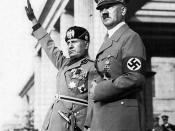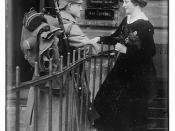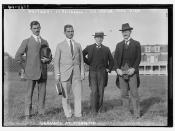Technology and the kinds of savage warfare conducted by the American and enemy forces during World War II both played a crucial role in determining the outcome of the war. The war began with most armies utilizing technology that had changed little from World War I, and in some cases, had remained unchanged since the 19th century. The war began with cavalry, trenches, and World War I-era battleships, but within only six years, armies around the world had developed jet aircraft, ballistic missiles, and even atomic weapons by one. The best jet fighters at the end of the war easily outflew any of the leading aircraft of 1929, such as the Spitfire Mark I. The early war bombers that caused such carnage would almost all have been shot down in 1945, many with two shots, by radar-aimed, proximity fuze-detonated anti-aircraft fire, just as the 1941 "invincible fighter", the Zero, had by 1944 become the "turkey" of the "Marianas Turkey Shoot".
The best late-war tanks, such as the Soviet JS-3 heavy tank or the German Panther medium tank, handily outclassed the best tanks of 1939 such as Panzer IVs. In the navy, the battleship, long seen as the dominant element of sea power, was displaced by the greater range and striking power of the aircraft carrier. The chaotic importance of amphibious landings stimulated the Western Allies to develop the Higgins boat, a primary troop landing craft; the DUKW, a six-wheel-drive amphibious truck; and amphibious tanks to enable beach landing attacks. In the Western European Theatre of World War II, air power became crucial throughout the war, both in tactical and strategic operations (respectively, battlefield and long-range). Superior German aircraft allowed the German armies to overrun Western Europe with great speed in 1940, largely assisted by lack of Allied aircraft. German...


